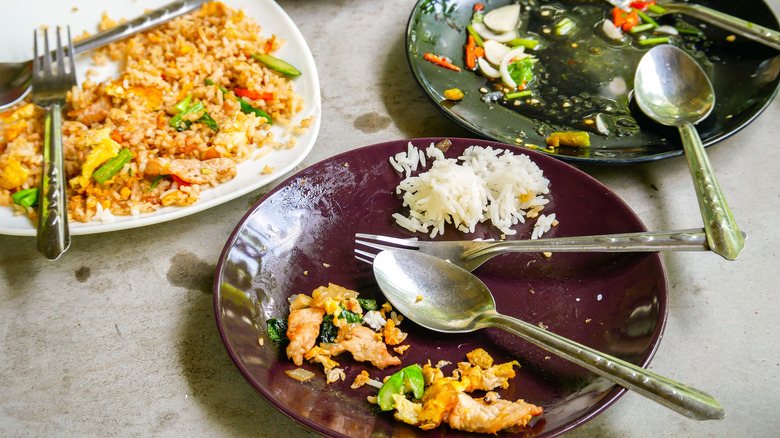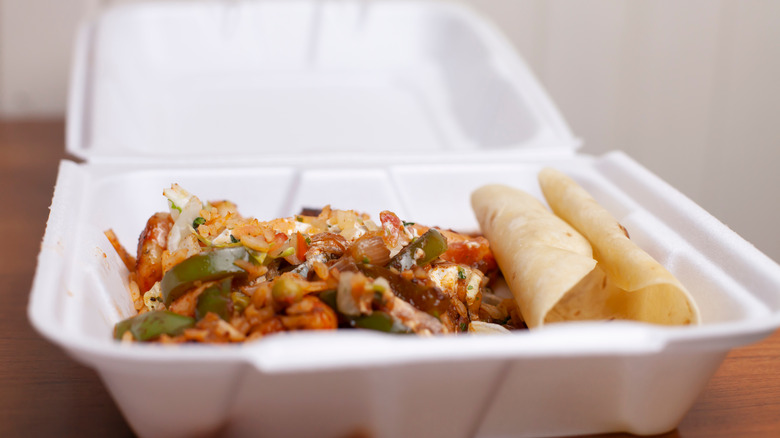The Origin Of The Doggie Bag Goes Back Further Than You Might Expect
Whether you take your leftovers home to eat for lunch the next day or you actually give them to your dog, the "doggie bag" has prevented many steaks, lasagna dinners, and slices of pizza from ending up in the trash. Food waste is an issue facing the world that the United Nations (UN) has taken head-on during the International Day of Awareness on Food Loss and Waste Reduction on September 29. According to the UN, about 17% of the food produced in the world is wasted. Broken down, that's 11% in households, 5% in the food service, and 2% in retail, according to the UN.
In the United States alone, the amount of food waste is rather startling. The United States Food & Drug Administration (FDA) estimates that 30 to 40% of the food supply ends up not being utilized. If that amount of food was weighed, it would be about 133 billion pounds and valued at $161 billion. In fact, food waste is the largest contributor to landfills, according to the FDA.
The invention of the doggie bag
Making a point to stem food waste is nothing new. During World War II, when much focus was placed on helping the men and women serving the country, Americans were encouraged to take home their restaurant leftovers to feed their dogs, hence, the dawn of the doggie bag, according to the Smithsonian Magazine. Taking home leftovers wasn't common before the war. The earliest restaurants that offered to pack up dinner scraps were in San Francisco, where the diners were given "Pet Pakits" to take home with them in 1943, according to the Smithsonian Magazine. Further north in Seattle, hotels gave customers a "Bones for Bowser" wax paper bag with food to take with them after their meal.
While the modern doggie bag may have its origin during WWII, the concept of taking leftovers home could be as old as the days of ancient Rome, according to Smithsonian Magazine, which wrote that dinner guests would bring their own napkins to dinners to clean their hands and faces and then would use it at the end of the meal to wrap up leftovers. Iconic Lawry's restaurant in Beverly Hills, California, which specializes in prime rib, also says it created the doggie bag shortly after WWII, according to Culinary Lore, for leftover bones.
Whether you take home your food for a meal or snack or to give to your pooch, you'll be helping to reduce food waste.

